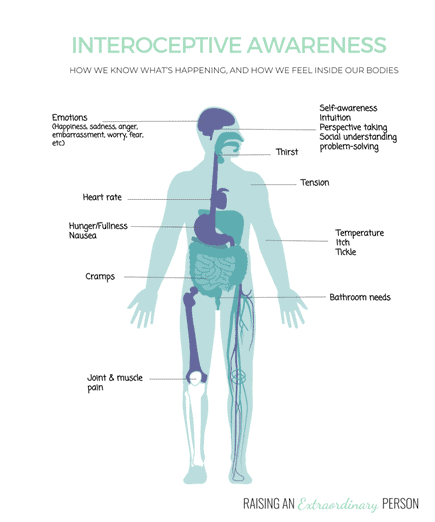Abstract
All bodily happenings - those we know of and even those we do not know about - are processed by the brain (cognitive function). We feel and experience our body both outwardly (our physical appearance or the sensation of touch) and inwardly (the intensity of hunger or our heartbeat during physical activity). The brain is continuously at work, processing and answering external and internal stimuli (even which we do not consciously know about).
A study by Anglia Ruskin University examined the processing of signals from the internal organs by the brain. Adults with weak connectivity and brain processing capacity experience a lack of self-perception leading to body shaming and weight preoccupation.
Interoceptive Awareness
Interoceptive awareness (IA) is knowing or being conscious of the body’s internal state and activities. The interoceptive system of the brain controls it.
The interoceptive system represents one of the least studied and comprehended parts of the body’s nervous system. In addition to overseeing IA, the interoceptive system controls our automatic or reflex movements (breathing, flinching, etc.).
Image Source: he’s extraordinary
Interoceptive awareness includes knowing about hunger, thirst, itching, emotions, and other bodily urges.
The part of the brain involved in IA is the insula. The insula is located deep inside the cortical region of the brain - hidden behind many folds.
Sensory impulses from all over the body send signals. These signals are received and processed by the insula to create IA. Some studies link IA functionality to the hippocampus.
IA affects self-awareness, recognition & regulation of emotions, ability to solve problems, and perspective.
The Study - Gut & Heart Signals Are Linked to Self-Perception
The study by Anglia Ruskin University focused on examining the processing of internal body cues by the brain and its association to body image.
The study assessed 36 healthy adults in 4 different spheres:
- Positive body image (body and functionality appreciation)
- Negative body image (body shame and weight preoccupation)
- Heartbeat evoked potential (HEP)
- Gastric-alpha phase-amplitude coupling (PAC)
The last two measurements were done to track interoceptive processing.
It was observed that some of the internal signals given out by the gut and heart are processed unconsciously. The brain processes such signals to continuously keep itself updated on the body’s internal state.
Weak brain responses to signals from both gut and heart were associated with increased body shame and weight preoccupation.
The researchers hypothesize that when the brain’s connectivity to the internal body state is weak, the brain overcompensates by putting more attention to the external body state.
This leads to the individual’s obsession with appearance as a measure for self-evaluation.
Further, differences in these internal connections between the brain and organs can help understand why and how people get afflicted with eating disorders.
The study’s findings are significant as the gut and heart signal measurements can be useful as biomarkers to identify and predict negative body image associated with eating disorders.
In addition, training individuals in interoceptive awareness can help amplify the unconscious signals and work towards a positive self-outlook.
Summary
- Interoceptive awareness (IA) is the extent of an individual’s awareness of their internal body state.
- Besides affecting self-awareness, IA also has a hand in perspective thinking and emotional recognition and regulation.
- Previous research has reported that IA is associated with positive and negative body image.
- A study found that weak connectivity between the brain and internal organs influences body shame and weight preoccupation.
- Training individuals in IA can help get them more attuned to unconscious signals, which may help in a clinical setting with eating disorders.






